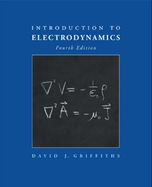Physics
Introduction to Electrodynamics 4th Edition solutions
Author: David J. Griffiths
Publisher: Cambridge University Press
ISBN: 9780321856562
Buy the book
Select Chapter:
